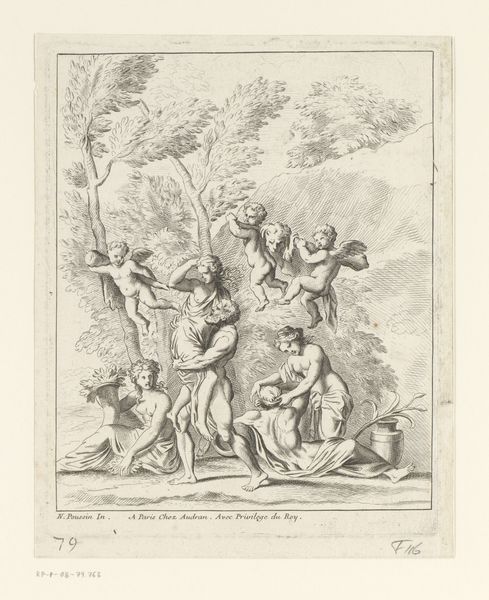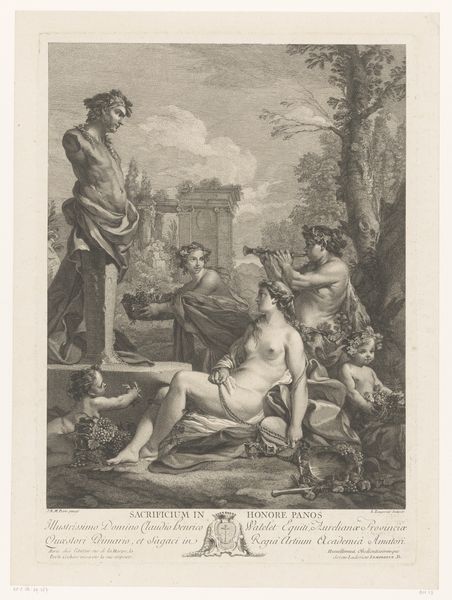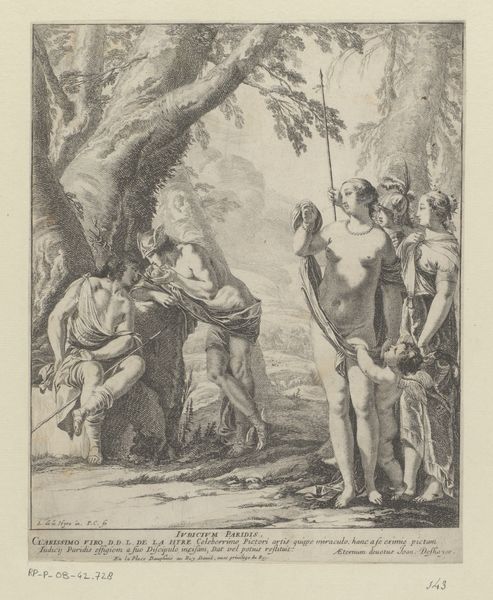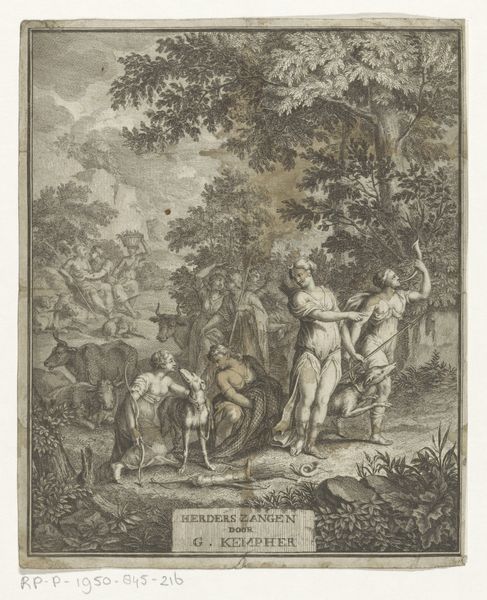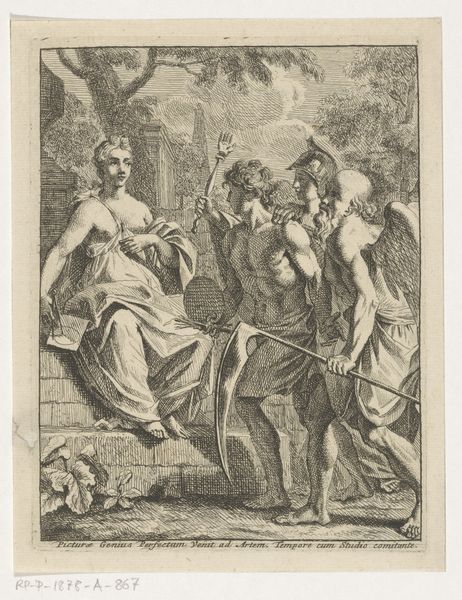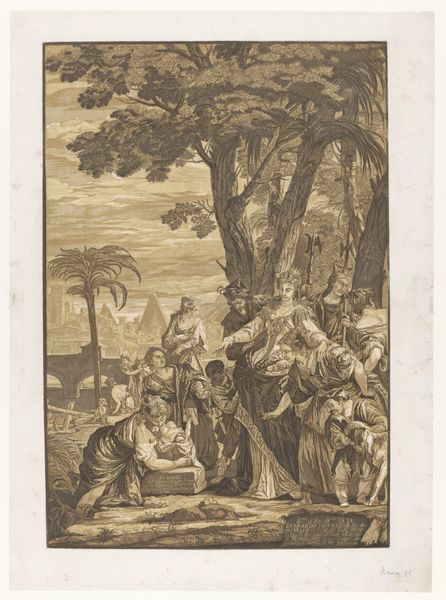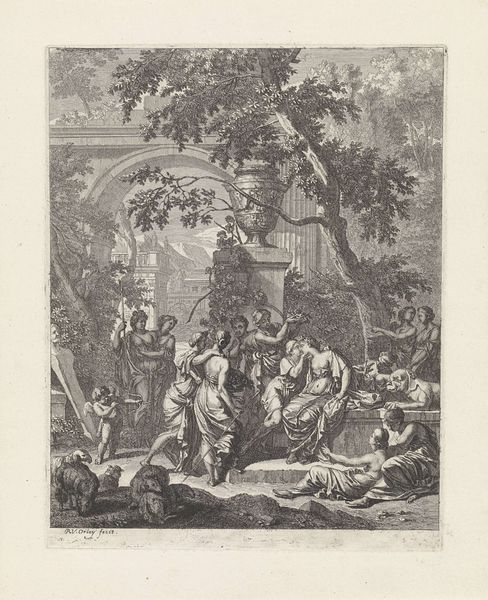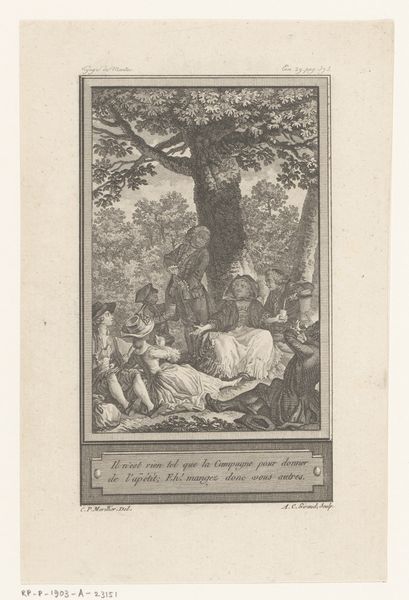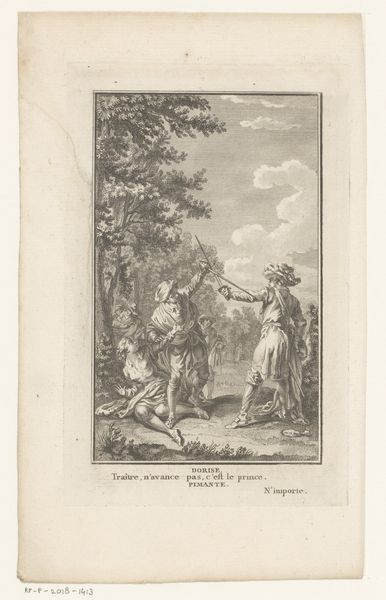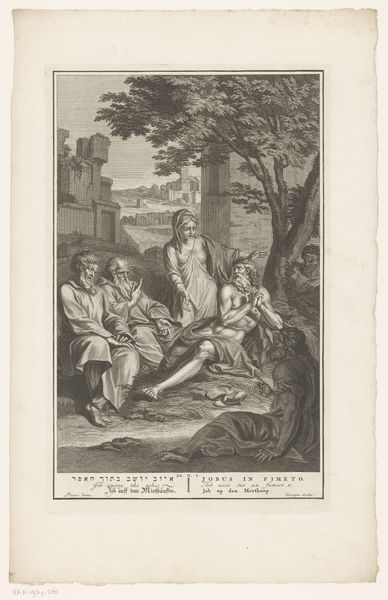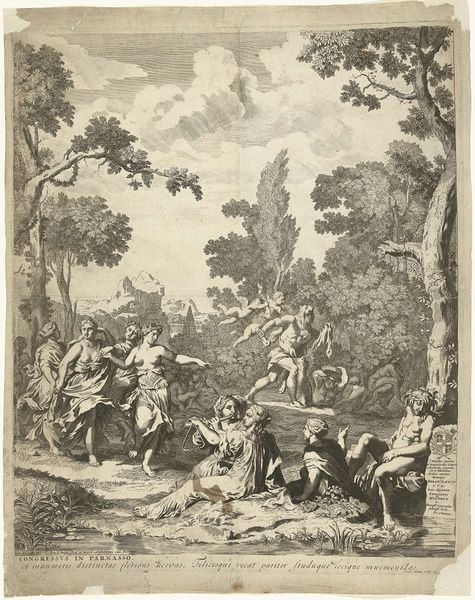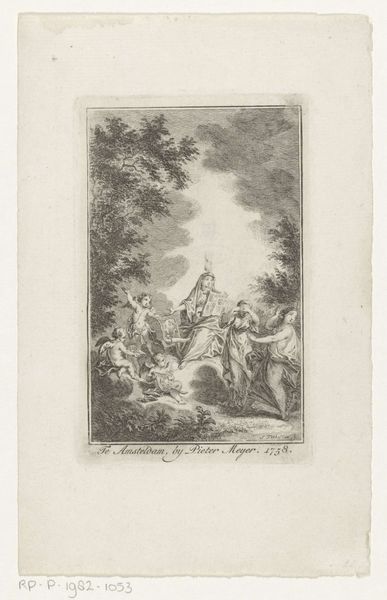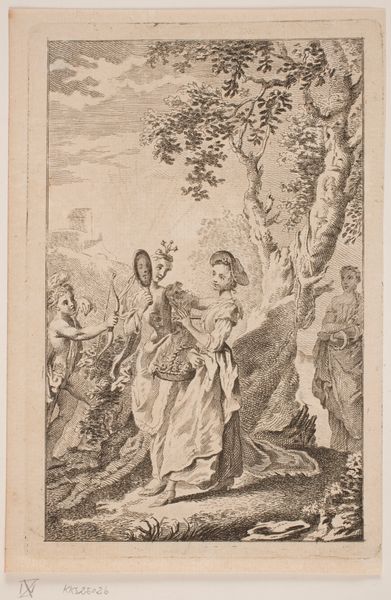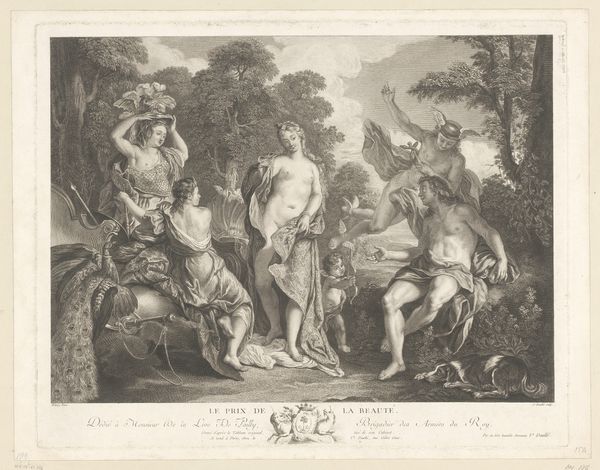
engraving
#
narrative-art
#
baroque
#
old engraving style
#
figuration
#
history-painting
#
engraving
Dimensions: height 355 mm, width 280 mm
Copyright: Rijks Museum: Open Domain
Pierre Brebiette etched this print, "Laban Searches Jacob and Rachel's Belongings," likely in the early 17th century. It presents a domestic scene charged with hidden meanings. Observe Laban, meticulously searching through belongings, a gesture that carries the weight of patriarchal authority and suspicion. Juxtapose this with Rachel, seated serenely upon a chest, concealing her father's idols beneath her. This act of concealment is a powerful symbol, echoing through time in various cultural contexts. Think of the "Venus Pudica," a classical motif where Venus covers her nudity, embodying modesty but also hinting at concealed desires. The hidden idol is particularly compelling. It represents not just religious transgression but also the deeply human act of clinging to familiar, ancestral beliefs in the face of change. This interplay between concealment and revelation, authority and deception, engages us on a subconscious level, tapping into our own complex relationship with tradition and rebellion. The symbol of the hidden idol has resurfaced through history, evolving and taking on new meanings in various contexts.
Comments
No comments
Be the first to comment and join the conversation on the ultimate creative platform.
